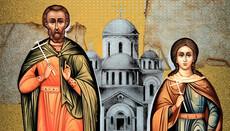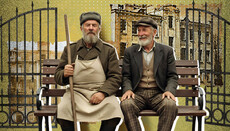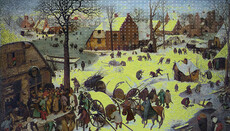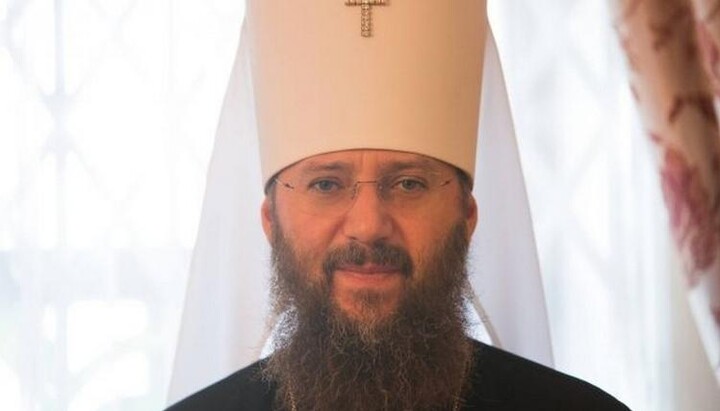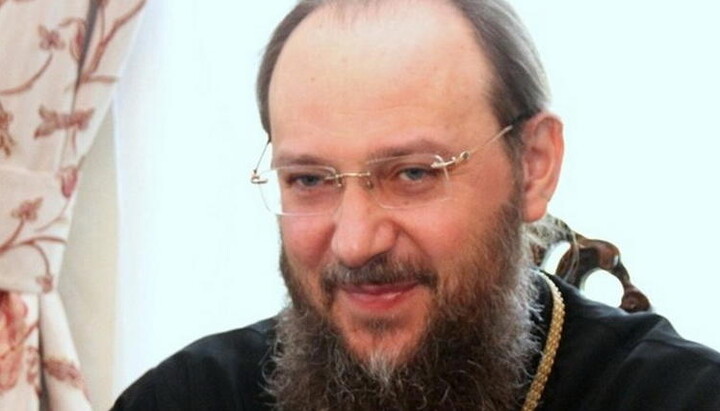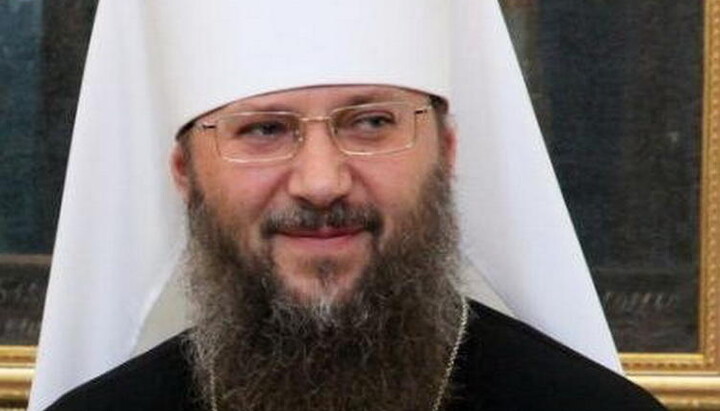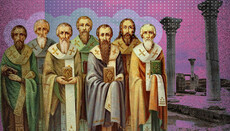Constantinople and new Ukrainian "Renovationism"
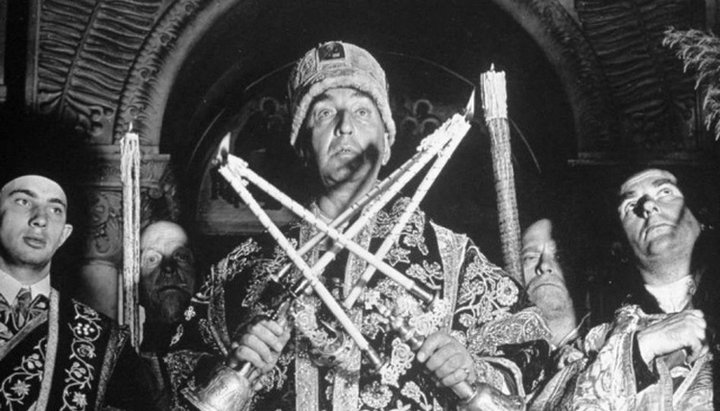
Ukrainian authorities copy the actions of Bolsheviks that destroyed the Church, while the present Phanar – the Constantinople Church, which recognized "Renovationists".
How and from whom the present Ukrainian Single Local Church (SLC) is created strongly resembles the events of the 20s of the last century when the Bolsheviks, who came to power in 1917, created the "Renovationist" or the "Living Church". The similarity is especially intensified if we consider the actions of the Constantinople Church then and now.
The prehistory of the Renovationist movement began as early as the Revolution of 1905, when the so-called "group of 32 priests" was formed in St. Petersburg. This group became the basis for the "Union of Church Renovation" created in 1905. The proposals put forward by this Union came down to the liberalization of Church life and the democratization of Church administration. The members of the Union heavily criticized the wide authority of bishops and privileges which the black (monastic) clergy had over the white (married) clergy. Renovationists (Russian: обновленцы; obnovlentsy) advocated for the independence of parishes, their lesser dependence on bishops and the principle of election of candidates for church office.
One of the documents of the Union of Church Renovation said: "Every parish led by a primate makes up a free brotherhood, a legally independent community that jointly manages its church property and is engaged in the work of parochial charity." This is almost identical to the policy of the current Ukrainian authorities, who are seeking through the adoption of anti-church bills to break the connection of the parishes with their ruling bishops and allow the schismatics to freely seize temples and church property.
Interesting in the above quote is the fact that the emphasis is made not on the eucharistic life of the church community, but on charity and property management. The emergence of a formalized liberal movement in Church circles was welcomed by V.I. Lenin. In one of his letters in 1905, he said: "The availability of the liberal reform movement among some of the young Russian clergy is beyond doubt: this movement found its spokesmen both at the meetings of the religious and philosophical society and in the church literature." Having come to power, Lenin used this movement to achieve his goals for the destruction of the Church.
It would be an unpardonable simplification to unambiguously assess the activities of the "group of 32 priests" and the ideas they put forward. But one of the main reasons that "Renovationism" eventually became the instrument for the destruction of the Church and is unequivocally assessed by history as a shame and betrayal is that the main role in this movement was played by young church careerists who wished to occupy high posts in the Church and did not burden themselves with various canonical restrictions.
This is what the historian of the very liberal views D.V. Pospelovsky wrote about it in the article "Renovation. Rethinking the Movement in the Light of Archival Documents": "So, the tragedy of the Russian Orthodoxy of the 20th century was that basically the right ideas for the renovation and revival of the Church were preached by unworthy people, carried out by dirty and even criminal hands. The main reason for strengthening the Soviet Renovationists is the desire of the Soviet authorities to undermine the Church from within."
From this point of view, one can see who in the Ukrainian Orthodox Church is the supporter of the Single Orthodox Church today and actively propagates this idea in the media. Basically, these are young people who do not hide their career ambitions. Many of them have occupied high church offices in the recent past, but today they are out of work and, therefore, they want to take revenge. At the same time, their arguments are strikingly similar to what the renovationists said: one must keep pace with the times, one must respond to society's needs, one must be freed from the "medieval fetters" and return to "apostolic simplicity" (in their understanding).
Despite the wind of change that was most vivid in those years, the supporters of the "Renovationism" turned out to be in the minority at the Local Council of 1917-18, and their activities went into a latent (latent) form. But in 1922 they were very popular. They were badly needed by Leiba Davidovich Bronstein (party pseudonym – Trotsky), who at that time was planning to destroy the Church.
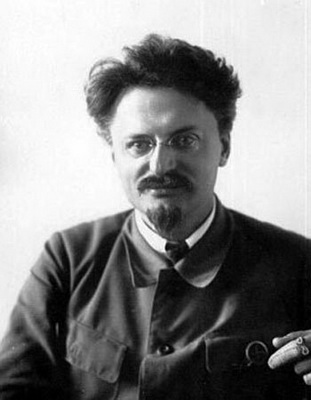
Elements of this plan were a campaign to seize church values under the pretext of helping the starving, which allowed large-scale and legally designed persecution of the Church, as well as the division of the Church from within, for which the supporters of the Church "renovationism" were brought in. The implementation of the plan for the schism of the Church was entrusted to the head of the 6th Department of the OGPU, whose competence included the struggle against religious organizations in the USSR, Yevgeny Aleksandrovich Tuchkov.
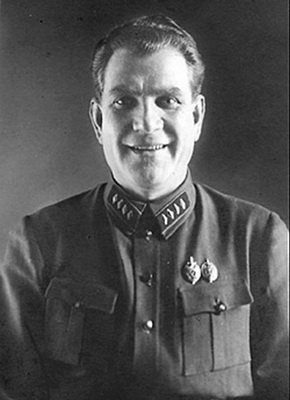
It should be noted that the Ukrainian SLC project, as in its time the "Living Church" project, was drafted not in the Church or even among intellectuals, but in the bowels of the state apparatus – the Administration of President. And neither church hierarchs nor "hierarchies" are engaged in it but politicians and state officials: Petro Poroshenko, Andrei Parubiy, Vladimir Groisman, Pavel Klimkin, etc.
According to Trotsky's letter to the Politburo of the Central Committee of the RCP (B.) with proposals for repression against the clergy, an indicative arrest of His Holiness Patriarch Tikhon should be held against the backdrop of an angry slander campaign against the Church in the media. The papers, according to Leiba Davidovich, were supposed to "take a mad tone." This element is also present in Ukrainian realities. Domestic media for the most part consider it an honor to pour an extra portion of dirt on the canonical UOC. The main accusation is aiding "the aggressor state" (in the 1920s version – "counterrevolution").
The Holy Patriarch Tikhon was arrested and placed under house arrest in the Troitsky metochion in Samoteka, which was visited by "renovationists" accompanied by GPU officers on the night of May 12, 1922.
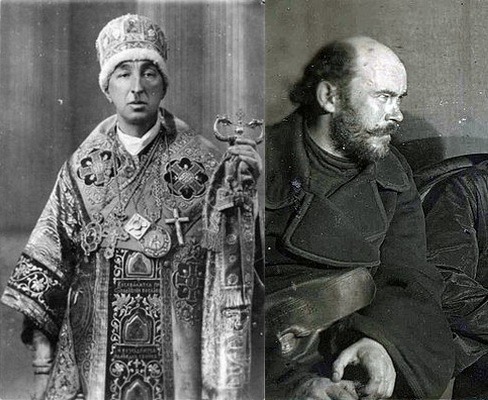
The priests Alexander Vvedensky, Vladimir Krasnitsky and Yevgeny Belikov accused the Patriarch of the dangerous and ill-considered policies that led to the confrontation of the Church with the state, and demanded that St Tikhon renounce his powers at the time of his arrest (according to Trotsky’s plan, the Patriarch was to be shot). Here the GPU and the "renovationists" played a tricky combination. Patriarch Tikhon was suggested to temporarily hand over duties to Metropolitan Agaphangel (Preobrazhensky) of Yaroslavl, but the transfer of church affairs was to be carried out by a group of "renovationists". The Patriarch agreed to it after some hesitation, which gave the "renovationists" the reason to state the following:
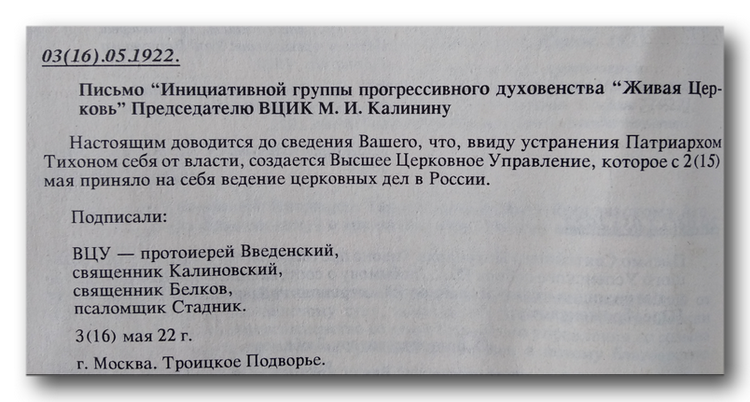
With Agathangel delayed in Yaroslavl by Soviet authorities, a group of reform-oriented Orthodox clergy seized the chancery offices of the Patriarchate and proclaimed themselves to be the Higher Church Administration (HCA). For Patriarch Tikhon not to prevent the "renovationists" from seizing the patriarchal chancery, the authorities transported him further away from this office, to the Donskoy monastery in Moscow, where he was kept in strict isolation.
Despite the fact that the renovationists hid behind beautiful slogans that they acted for the good of the Church and the people (now is the same thing), the head of the 6th Department of the OGPU Ye.A. Tuchkov called everything by their own names. In the report to the deputy chairman of the OGPU V.R. Menzhinsky he wrote: "Having sent Tikhon to another premise (Donskoy monastery) and settled in the former patriarchal chancery, this group ("renovationists" – Ed.) declared itself a temporary higher ecclesiastical administration and appealed to believers with a declaration that Tikhon is a state criminal and called upon believers to fight the counter-revolution of the Church. From this time, in contrast to Tikhon's anti-Soviet policy, politics begins in the spirit of Soviet power and the general replacement of Tikhon’s old bishops and prominent priests with their supporters. Thus, for a short period, within 3-4 months, almost all Tikhon’s anti-Soviet apparatuses, that is, bishops and eparchial (provincial) offices were replaced by supporters of the HCA. This was the beginning of the schism in the Orthodox Church and the change in the political orientation of the church apparatus."
Here is the true goal of the then "Living Church", as well as today's SLC!
The Secretariat of the Central Committee of the RCP (B.) sent out telegrams to the places in which said about the need for the Soviets to support the "renovationists". Simultaneously, the ruling bishops were often threatened and pressed by GPU to recognize the authority of the HCA and the "Living Church", the dissenters were repressed. Thus, by the end of 1922, the "renovationists" had seized two-thirds of the 30,000 churches. In April 1923, they were able to convene their Renovationist Council, which was proudly named "The Second Local All-Russian Council". By the decision of this false Council, the Holy Patriarch Tikhon was "stripped of his episcopacy, priesthood and monastic status", and the patriarchate itself was abolished as a "monarchical and counter-revolutionary way of leading the Church". Also, the false Council expressed unconditional support for the Soviet government, legalized the equivalence of the married (!) and celibate episcopate, the second-married clergy and the transformation of monasteries into labor communes. The HCA was transformed into the Higher Church Council (HCC), which was accepted by the People's Commissariat of Justice as a legitimate body of church administration. Patriarch Tikhon did not accept the decisions of this false Council.
Neither were these decisions recognized by Constantinople in the person of the then Patriarch Meletius IV (Metaxakis). In the summer of 1923, the so-called "Pan-Orthodox Congress" took place in Constantinople, which called the dethronement of Patriarch Tikhon by the Renovationist "Council" illegitimate. At the same time, both the "renovationists" and the Soviet government, supporting them in every possible way, tried to obtain recognition from the Ecumenical Patriarch. The methods that were used for this were uncomplicated. The Anti-Religious Commission of the Central Committee of the RCP (B.) decided by its ruling of September 18, 1923: "To instruct comrade Popov (Chairman of the Anti-Religious Commission – Ed.) to talk with comrade Chicherin (People's Commissar for Foreign Affairs – Ed.) on the situation of Meletius and the Synod of Constantinople and, depending on this, to resolve the issue of returning the house in Moscow to their representatives." That is, "renovationists" attempted to gain the Ecumenical Patriarch's favor by returning earlier confiscated property.
On June 27, 1923, Patriarch Tikhon was released from prison, which resulted in the return to his primatial omophorion of a significant part of the hierarchs, clergy and laity who had fallen into "renovationism". The leaders of "renovationism" meanwhile managed to quarrel among themselves and split into different directions, and therefore Tuchkov was tasked with subordinating all the renovationalist groups to a single central body (like the SLC). To this end, in August 1923, the HCC was transformed into the "Holy Synod", headed by "Metropolitan" Eudokim (Meshchersky) banned from priesthood.
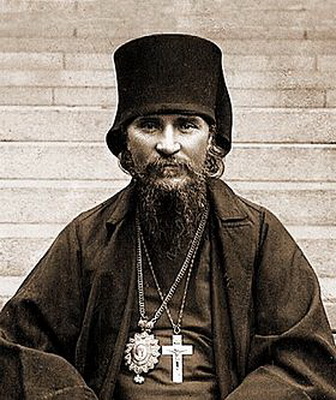
However, Tuchkov failed to fulfill this task because of the overestimated ambitions of the "renovationist" leaders. The "Living Church", led by Vladimir Krasnitsky and the "Union of Church Renewal" headed by Antonin (Granovsky) did not submit to the newly created Synod.
In December 1923, instead of Meletius IV, Gregory VII became the Ecumenical Patriarch. On 17.04.1924, the new Patriarch proposed at a meeting of his Synod: "Considering it necessary that in order to fasten again the age-old bonds and carry out the duty of providing church assistance to our common love and union, we studied the movement of Russian ecclesiasticism, known as the "Living Church", and especially the most distressing church differences and divisions, and that we have the full opportunity to pacify the affairs and the complete cessation of the present anomaly, either from a misunderstanding of the essence of the external changes that have taken place or from excessive and useless return to views and old systems that have lost all life-force and meaning, we invite the Holy Synod to send from the Mother Church of Constantinople to Her daughter, the fraternal Orthodox Russian Church in Russia, as was often the case in the past and in exceptional circumstances, a special proper Mission, provided with reference letters to the Russian government and authorized to study and act locally on the basis of and within the limits specified by the instruction, consonant with the spirit and traditions of the Church. We hope that with God's help, it will be able to help with words of love and guidance to restore reconciliation and unity in the entire fraternal Russian Church for the benefit of all Orthodox."
How this is consonant with the decision of the Constantinople Synod regarding Ukrainian autocephaly. There – the recognition of the "Living Church" "the movement of Russian ecclesiasticism", rather than schismatics and traitors, here – the recognition of the UOC KP and the UAOC "ecclesiastical authorities". The same "Mother Church of Constantinople" and the same appropriation of the right to interfere in the affairs of another Local Church.
The document known as "The opening speech of His Holiness Ecumenical Patriarch Gregory VII and the resolution of the Holy Synod on the basics of the work of the Patriarchal Mission leaving for the USSR" said that "at the invitation of the ecclesiastical circles of the USSR" ("renovationist" – Ed.), he accepts the proposed "matter of appeasing the recent confusions and disagreements in the local fraternal Church, appointing for this a special patriarchal commission of bishops". This commission was instructed "to go there to promote with God's help words of love and through various instructions to restore reconciliation and unity in the Fraternal Church for the benefit of all Orthodoxy". In its activity, "the departing commission in its works must rely on those local church movements that are loyal to the Government of the USSR" ("Renovationists" – Ed.). "In view of the church disagreements that have arisen, we believe it necessary that His Holiness Patriarch Tikhon, for the sake of uniting the schismatics and for the sake of the flock, will sacrifice himself, immediately leaving the Church Administration, and that, at the same time, the patriarchate is abolished, albeit temporarily, as born entirely in abnormal circumstances at the beginning of the civil war and as considered a significant obstacle to the restoration of peace and unity. Instead of the abolished patriarchate, the highest ecclesiastical administration is to receive the now freely and canonically elected Synod ("renovationist" – Ed.), which will elaborate the details of the Synodal Administration of the Church in the USSR."
Both the documents quoted were signed by Archimandrite Basil (Dimopoulos), the official representative of the Patriarchate of Constantinople in Moscow.
The above document cries out for its impudence and non-canonicity: the Patriarch of Constantinople recognized the renovationist "Synod" and suggested Patriarch Tikhon leave the primatial see!
However, based on this document, the Soviet press went even further. On June 1, 1924, the newspaper "Izvestia" published an article "The Ecumenical Patriarch dismissed the former Patriarch Tikhon from the administration of the Russian Church," which read: "The Moscow representative of the Ecumenical Patriarch, Archimandrite Basil Dimopoulos, stated to the ROST representative the following: "I have just received from Constantinople the message that the Patriarchal Synod of Constantinople, under the chairmanship of Ecumenical Patriarch Gregory VII, issued a decree to remove from the administration of the Russian Orthodox Church Patriarch Tikhon as responsible for the whole church turmoil. This decision was made at a meeting of the Synod under the Ecumenical Patriarch on May 6 and was adopted unanimously."
After such attacks of the Mother Church (Constantinople), the Holy Patriarch Tikhon sent a letter to Phanar:
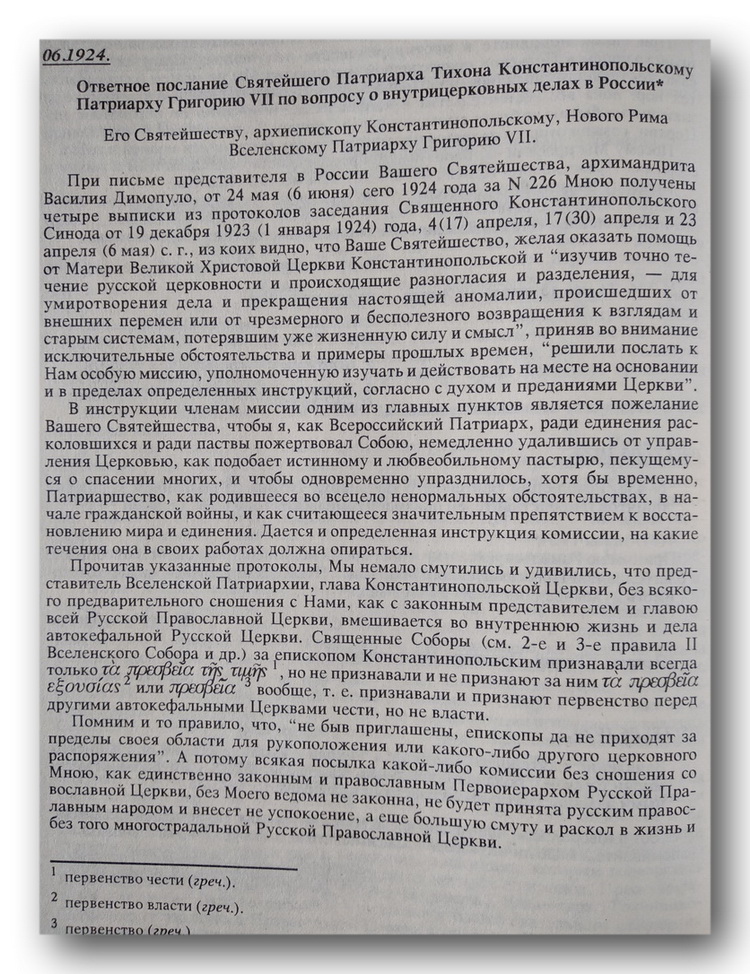
Everything is the same as now! The Patriarchate of Constantinople, without any prior appeal to His Beatitude Metropolitan Onufry as the legitimate Primate of the Ukrainian Orthodox Church, intervenes in the internal affairs of the UOC. The consequences of this interference can be as dreadful as in the 1920s. This intervention, in the words of Patriarch Tikhon, "will not bring peace, but even greater confusion and division".
Unfortunately, the format of this article does not allow us to describe all aspects of the shameful history of "renovationism": how the state handed over to them temples and other property taken from the Church by force, how "renovationist" "priests" wrote denunciations of the Church clergy, for which the latter were sent to the GULAG or were shot, how the "hierarchs" of the "renovationists" declared their break with religion and much more. Similarly, many unworthy acts of the representatives of the Patriarchate of Constantinople regarding "renovationism" have not been reflected in this article. And all the events around the SLC project also cannot be fully detailed. But enough is said to understand that both the Soviet "renovationism" and the Ukrainian SLC are essentially purely political projects invented somewhere in the bowels of the state apparatus and intended to solve political problems. As can be seen from the history of "renovationism", such a task was the destruction of the Church. It seems that today this is also the real task of the SLC project.
The end of "renovationism" was very disgraceful. As soon as the secular state rejected this structure as unnecessary, it immediately began to decline and finally ceased to exist in the 1940s. It is also significant that the head of "renovationism" Alexander Vvedensky looked for an opportunity to return to the Church in 1944 (recall the "penitential" letter by Mikhail Denisenko to the Bishops' Council of the ROC), but a precondition was his acceptance in the rank of Metropolitan, although before the break with the Church he had been a protopriest. With the death of Vvedensky in 1946, "renovationism" completely disappeared.
However, the very idea of "renovationism" has not disappeared. Today it was quite useful to the current Ukrainian authorities. No wonder that our rulers do not know the history and do not want to learn from it. But there is a hope that Patriarch Bartholomew of Constantinople knows this story and will not repeat the unseemly acts of his predecessors.
